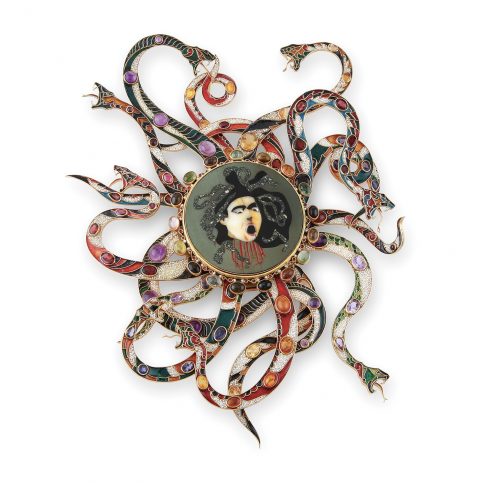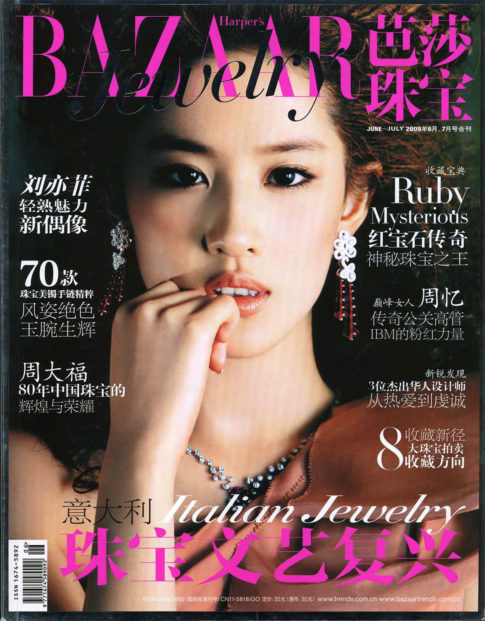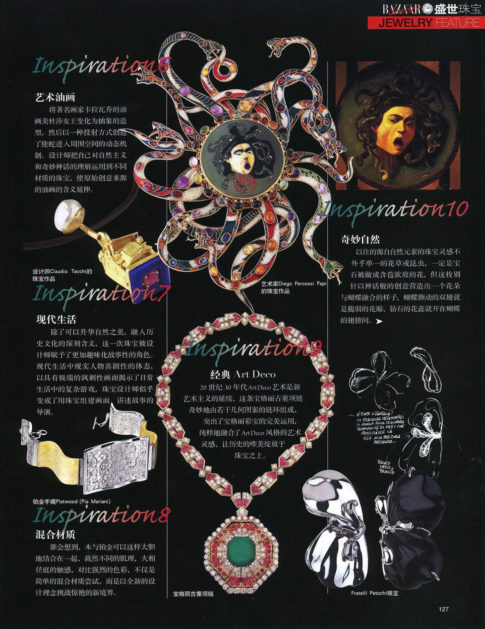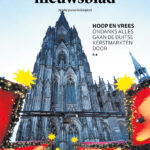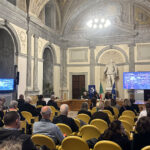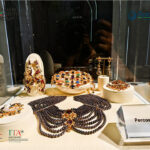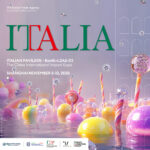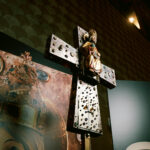Peking, 5th – 19th April 2009
ROME – THE JEWEL
THE DREAM FACTORY
The exhibition “Rome, The Jewel: The Dream Factory” is born from collaboration between the “I.C.E.”(The National Institute for Foreign Commerce) and the Associazione Orafi Romani (the Association of Roman Goldsmiths). The project’s objective is to carry abroad that Italian artistic and cultural inheritance which is capable of being competitive in international markets, due to a balanced relationship between history, culture, art and high-level artisanship. Even today, Roman jewellers are capable of giving life to precious creations which make their wearers unique. It is precisely this strength of high jewellery which characterizes this exhibition in Peking and in China.
To measure oneself against history is not easy for a Roman artist who decides to do so in relation to Caravaggio’s famous Medusa. Percossi Papi goes out into the open without fear, working in the jewelry craft and doubling the dramatic impact of the event, allowing the story to develop on two narrative levels: in the first, it is loyal to the Caravaggio-style self-portrait of the Florentine work, proposing it in the technique of the opus sextile; in the second it creates a dynamic game of snakes projected in the invasion of the surrounding space. Naturalism and mythology allow Percossi Papi to expand the story creating a Baroque space. Memory generates emotions through the shape of the precious that expresses itself with the colour of stones and enamels. The art of Percossi Papi seems projected backwards in time, fed by the vitality of the pictorial contrasts of the seventeenth century naturalism, of the medieval atmospheres highlighted in the rhythmic scanning of the enamelled alveoli. In Percossi Papi, the theme of the reuse of the ancient techniques instinctively occurs, on the same level as those of colour. But while this is the foundation of his poetic licence, the foundation of his technique seems subordinate: “I am attentive to the desires of the customer and I read the emotions through colour; I work with a chromatic palette that starts with primary colours and I add other colours: in this way the dialectics of emotion-colour is opened up;” An expressionist conception of colour aspires to become a perturbation and in jewellery construction it assumes a musical rhythm. Harmony is the challenge to renew, intensely lived and always playing on experimentation it is a reddening of the mind and of the visual perception: “every time I measure shape through the dictation of emotions”. Nevertheless that technique which he seems almost not to want to consider, emerges on its own to contain the colour. The cloisonné is the imprint of its graphic torment, everything spent in the search of a formal elegance that betrays the noble reference examples.

